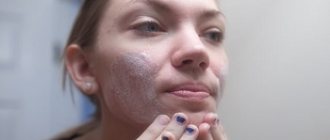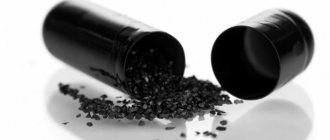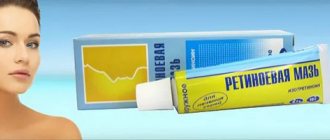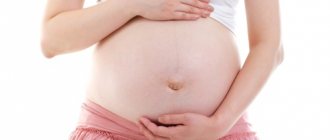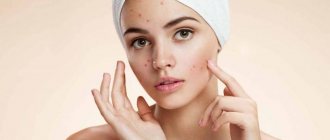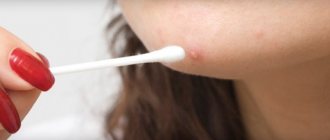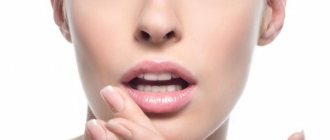Acne is an inflammatory dermatological disease that can occur in adults, adolescents and even children.
Photo 1 - Acne disease
The popular opinion is that it cannot be treated and you just need to wait until the processes go away on their own, upon reaching a certain age, several months after childbirth (if acne occurred during pregnancy), etc.
Photo 2 - Acne can be cured
However, this statement does not correctly reflect the situation and the answer to the question - is it possible to cure acne forever - is unambiguous. The problem can be solved, you just need to find the cause of its occurrence and choose an effective remedy.
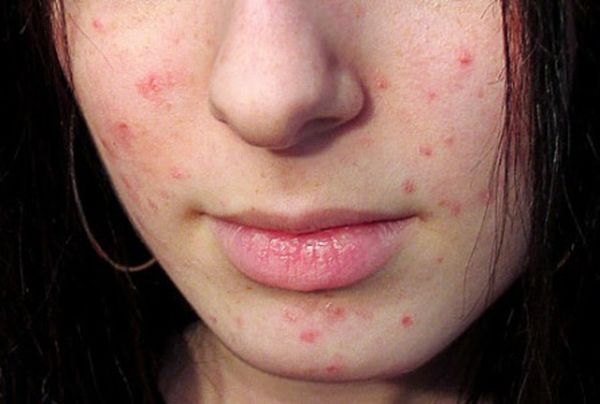
Photo 3 - It is necessary to eliminate the cause of acne
To confirm this, there are many clear examples of acne cures; just look at the photos of patients before and after therapy.
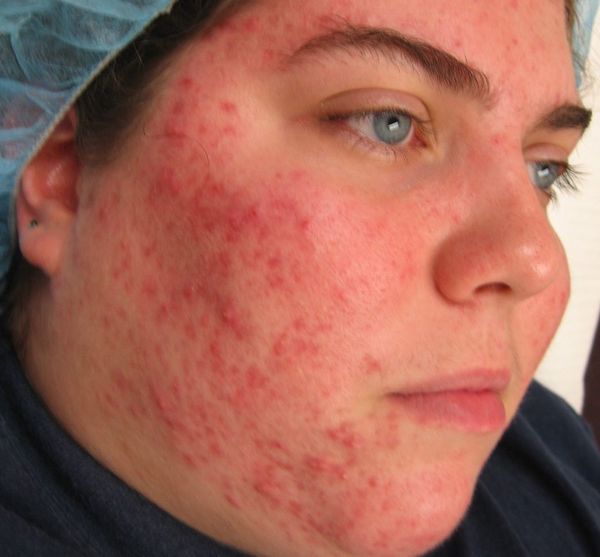
Photo 4 - There are many ways to get rid of acne forever
Causes of acne
Among the main reasons for the development of this skin disease are the following:
1. Hormonal changes that affect the functioning of the sebaceous glands. Many women notice the appearance of acne on their face before their period. Also, during the period of bearing a child, the expectant mother has an increased level of progesterone, which leads to excessive production of sebum.
2. Hereditary factors.
3. Stress.
4. Treatment with certain drugs, such as corticosteroids.
5. Pathologies of the gastrointestinal tract, endocrine diseases.
6. Increased activity of the sebaceous glands.
7. Skin damage that is accompanied by inflammation.
8. The problem of acne can arise due to poor hygiene or, conversely, excessive cleanliness.
Acne in an adult may appear due to the use of “comedogenic” cosmetics. The desire to disguise a defect with a thick layer of foundation leads to aggravation of the problem.
In addition, attempts to squeeze out a pimple can complicate the condition. Under no circumstances should this be done. If acne on the face is accompanied by an infection, then such actions will lead to acne progressing and microbes entering the bloodstream. Due to the close connection between the blood vessels of the face and the vessels of the brain, such actions can have serious consequences, including death.

In girls, the use of contraceptives with progesterone can lead to an exacerbation of acne. If the female body has an excess of male sex hormones, then contraceptives that have an antiandrogenic effect will help reduce the manifestation of the disease.
What tests should I take for acne?
To determine the essence of the problem and understand what exactly causes the rash on the skin of the face, you need to undergo an examination. Which doctor treats acne?
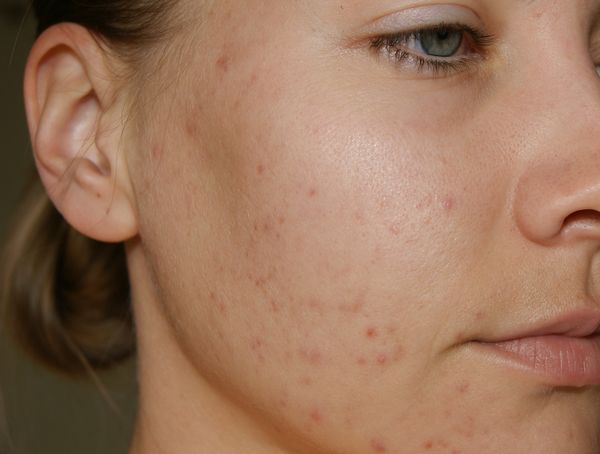
Photo 5 - Determine the essence of the problem
You need to start with a consultation with a dermatologist, who will assess the degree of damage to the skin and draw up a plan for subsequent actions.

Photo 6 - Consult a dermatologist
The causes of these dermatological problems are both internal and external factors:
- failure to comply with basic hygiene rules;
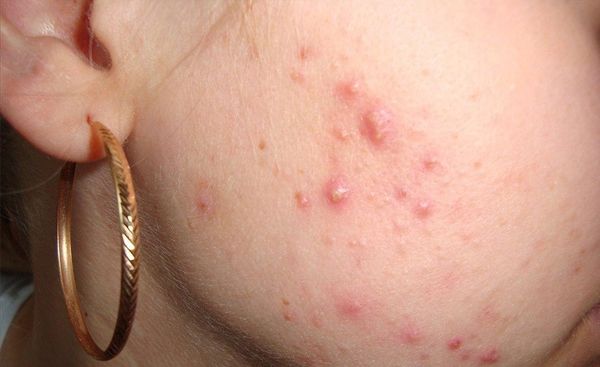
Photo 7 - Acne may be caused by poor hygiene - incorrectly selected cosmetics and products;
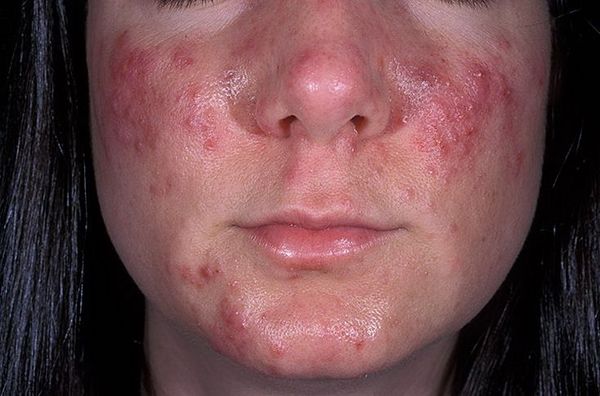
Photo 8 - Acne may appear due to low-quality cosmetics - functional disorders of internal organs;
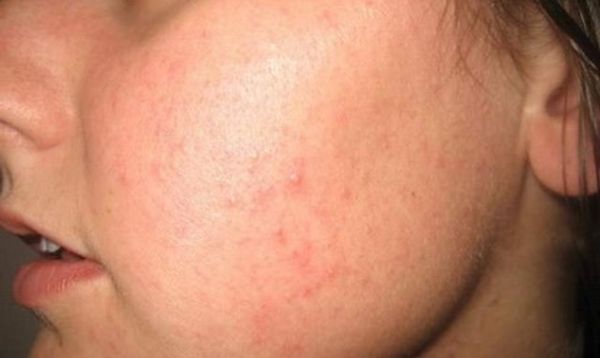
Photo 9 - Acne may appear due to poor functioning of internal organs - hormonal disorders;
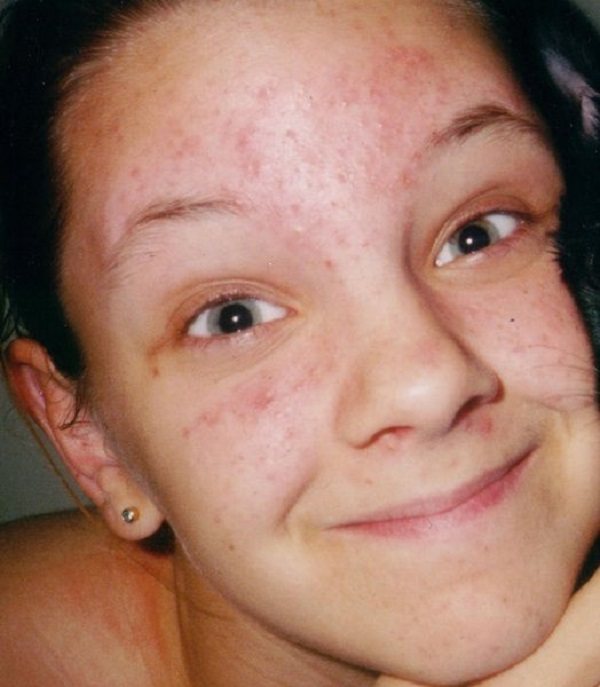
Photo 10 - Acne occurs due to hormonal imbalances - intoxication;
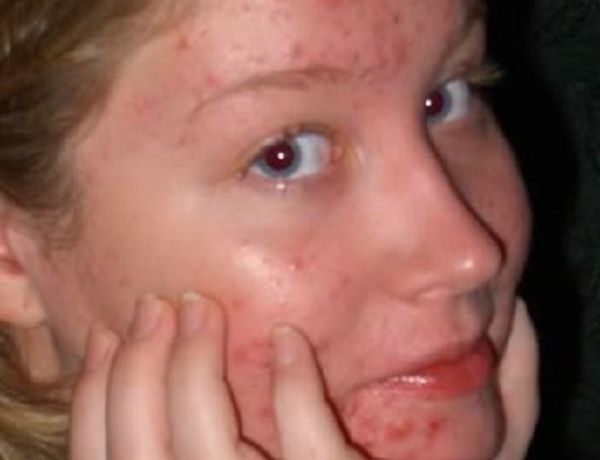
Photo 11 - Intoxication causes acne - intestinal dysbiosis;
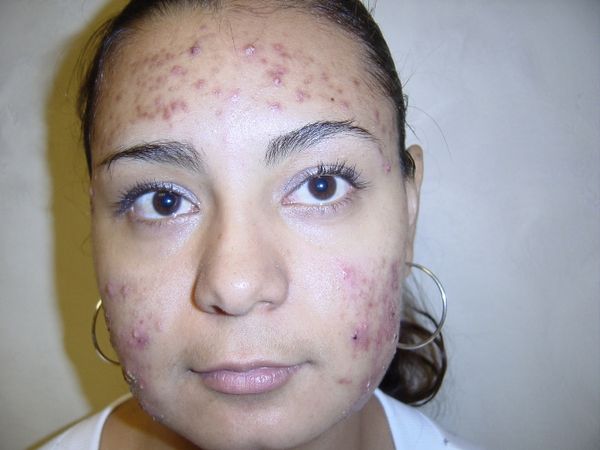
Photo 12 Dysbacteriosis can cause acne - defeat by demodex;
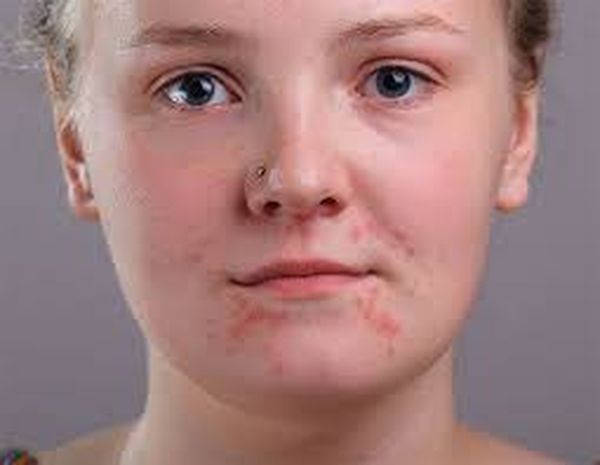
Photo 13 - Demodex - microscopic mite - vitamin deficiency, weakened immunity, unbalanced diet, etc.
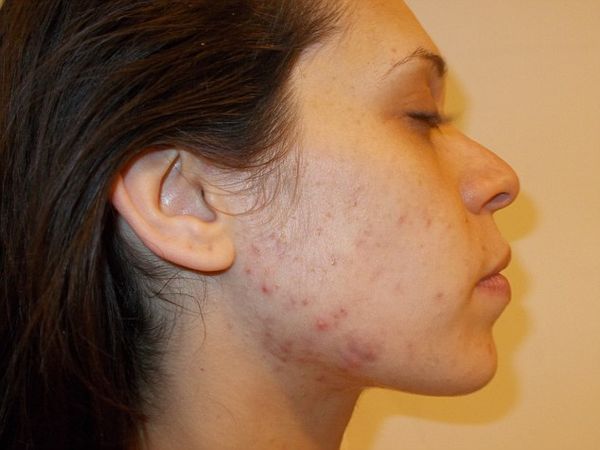
Photo 14 - Acne may appear due to a lack of vitamins
At a young age, acne is most often a consequence of hormonal changes. This problem itself disappears by the age of 20-25, but this fact does not mean at all that during this time the situation should be left to chance.

Photo 15 - Acne often disappears by age 20-25
In addition, the lack of rational treatment of acne can lead to more serious consequences, such as demodex, a parasitic disease caused by subcutaneous mites. Such a mite will never appear on healthy skin.
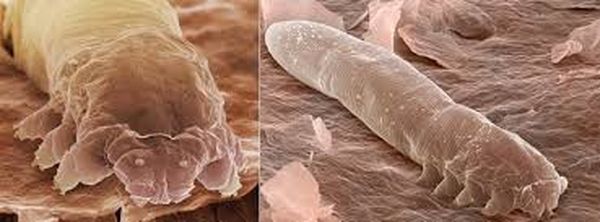
Photo 16 – Demodex
A special nutrient medium is required for its functioning. Increased oily skin in adolescence, coupled with decreased immunity and insufficient protective functions, is exactly what the parasite needs to survive.

Photo 17 - Demodex infection
Have you ever wondered: is acne contagious or not? If small abscesses on the skin are not often a source of infection, although they are caused by pathogenic bacteria, then it is quite possible to become infected with Demodex.
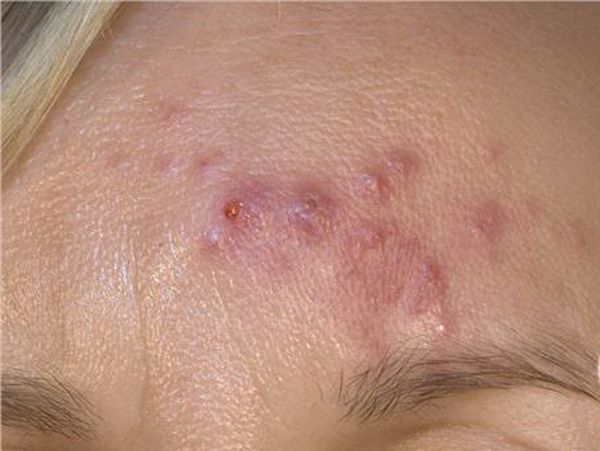
Photo 18 - Demodex is contagious
To do this, you only need tactile contact with the sick person, a friendly kiss, a hug, the use of shared hygiene items or the use of someone else's cosmetics, especially a powder sponge.
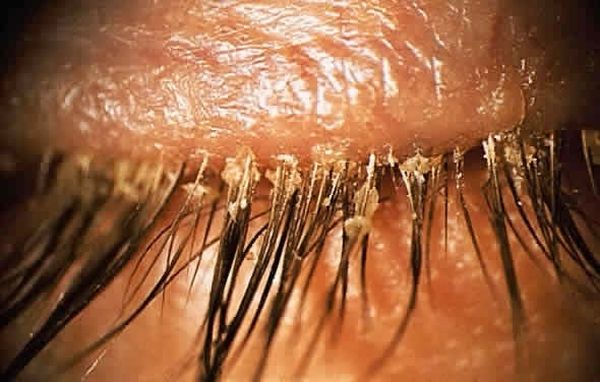
Photo 19 - Demodex is transmitted through hugs
You need to get tested and visit specialists if you suspect demodex.
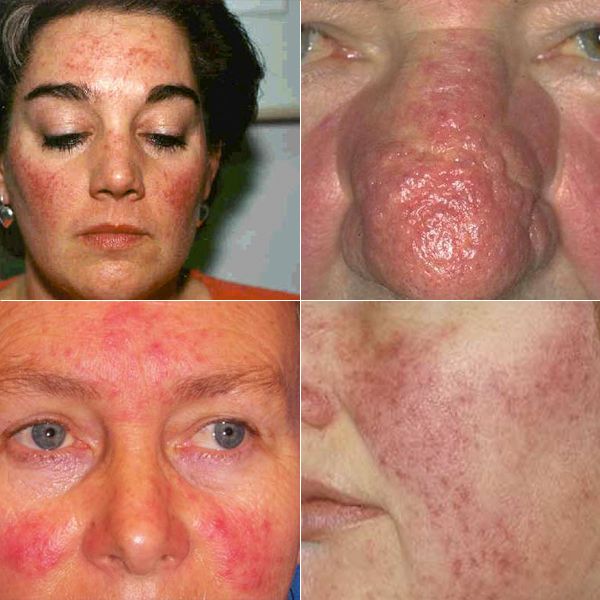
Photo 20 - The analysis will reveal whether the patient has demodex or just acne
When visiting a hospital, a doctor will most likely send the patient to an endocrinologist, gynecologist or urologist, gastroenterologist, and will also prescribe tests:
- analysis of microbial flora, which is taken from the surface of the affected area of the epidermis;
- analysis for hormonal levels;
- blood chemistry;
- test for reaction to antibiotics, etc.
In addition, a qualified specialist should warn the patient which procedures are contraindicated in the presence of acne, and what needs to be done to prevent further spread of the infection.

Photo 21 - The doctor will order tests and give recommendations
Possible forms of acne disease
There are non-inflammatory and inflammatory forms of acne, which are characterized by their own unique symptoms. The degree of the disease is determined by the number of rashes, the location of acne on the body, the presence or absence of certain elements of the rash.
Acne disease can manifest itself in the form of blackheads (open comedones) or whiteheads (closed comedones), papules, pustules, cysts. In the first case, acne looks like enlarged and clogged skin pores. In the second - clogged pores with a small hole. You can get rid of blackheads on your own or with the help of a cosmetologist. It is difficult to remove white ones on your own; consultation with a specialist is necessary.
Papules look like pink, painless pimples, the size of which does not exceed 5 mm. Pustules occur as a result of the active proliferation of bacteria inside the comedone, which leads to inflammation and the formation of pus. It is not advisable to squeeze them out - this can result in an exacerbation of inflammation and an increase in the size of the pimple.
Nodules are large and painful acne rashes more than five millimeters in diameter, bluish-pink in color, and have an unpleasant appearance. A pimple this big can leave scars.
Types of acne
Depending on the etiology of the disease, acne differs into the following types.
Comedones
This type includes ordinary blackheads or dots on the face, which occur in women and men at any age. Comedones are divided into two categories: black open spots and white closed bumps. The causes of comedonal acne are excessive sebum production and clogging of skin pores with dead epidermis.
For preventive purposes, cosmetologists advise regularly using a facial scrub. The procedure facilitates the release of subcutaneous fat and prevents pores from becoming clogged. When you squeeze out a blackhead, there are no marks or scars left on your face.
What does this type of acne look like? After squeezing, you can see a yellow sebaceous plug and at the end a black dot - this is the keratinized layer of the epidermis that caused the disease. Read more about how to get rid of blackheads on the nose at home →
Whiteheads
Blockage of the sebaceous glands on the face occurs due to excessive sebum production. Blackheads are white bumps up to 2 mm in height. There is no pain when touched. There is no inflammatory process. After removal, a white or yellow purulent fluid will be released. There are no consequences in the form of scars.
Juvenile acne
The disease is accompanied by a severe inflammatory process. Germs and bacteria quickly spread over the entire area of the face and provoke the appearance of purulent formations.
The causes of acne of this type are excessive production of testosterone, as a result of which the work of the sebaceous glands becomes hypertrophied, and at the same time rapid keratinization of the excretory ducts occurs. Sebum begins to decompose and serves as a favorable environment for the development of acne-causing bacteria.
Papules
Signs of this type of disease on the face of women and men are severe redness around blackheads. Inflammation is caused by the penetration of pyogenic bacteria into the pore. According to reviews from cosmetologists, such pimples go away on their own within a few days and do not leave marks on the skin.
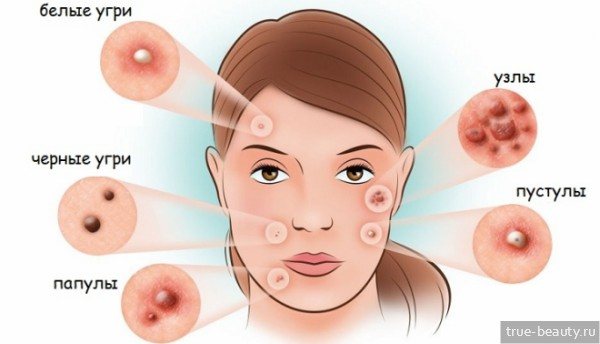
Pustules
Pustular formations that spread in the form of a rash throughout the body. The sebaceous glands become clogged with subcutaneous sebum.
Indurative acne
The main symptom of the disease is the formation of large round red pimples caused by the spread of harmful bacteria in the deep layers of the epidermis and hair follicles. Pimples are painful when pressed.
Phlegmonous formations
In terms of symptoms, this type is similar to indurative rashes and is characterized by an inflammatory process. There is pain when pressed. After squeezing, deep potholes and scars remain on the skin.
Drain blackheads
The disease is considered the most severe; indurative acne combines with each other and forms a large area of inflammation on the face.
Oil acne
The disease occurs in persons whose activities involve working in production and with oily materials. Due to constant contact with oils, they eat into the skin and clog pores. You can get rid of the disease by maintaining hygiene and eliminating harmful factors.
Rosacea
Poor blood circulation in the skin causes stagnation and acne pimples appear. The causes of the disease can be dystonia, hormonal imbalance, frequent colds, disruption of intestinal microflora and a lack of propinobacteria in the body.
Each type of acne has its own stages of development and severity. Before treating acne, a complete diagnosis should be carried out.
Mild degree
It is difficult to find a person who has never had pimples on the face or other parts of the body. The causes of acne lie in minor hormonal changes, mechanical damage to the skin, and excessive exposure to ultraviolet radiation. This condition does not require treatment, marks and scars do not remain after it. When comedones appear, there is reason to be wary, as inflammation and papules may develop. If a small number of pimples and comedones (no more than ten pieces) are constantly present on the face, then this condition is considered a mild degree of acne. At this stage of the disease, the formation of pustules or nodes is not observed. To get rid of the problem, it is enough to adhere to the rules of hygiene; drug treatment is not prescribed in this case.
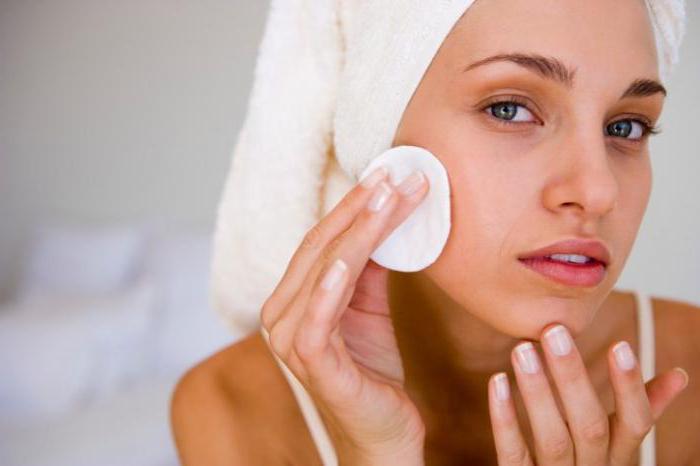
Nodular cystic acne: causes
The main signs that characterize the disease are the formation of cysts under the skin. They are filled with sebaceous plugs and purulent contents. The elements protrude above the surface of the skin, are accompanied by an inflammatory process, and have a bluish color. A common consequence of this form is scars that are difficult to heal.
Similar article - Premenstrual syndrome - what is it?
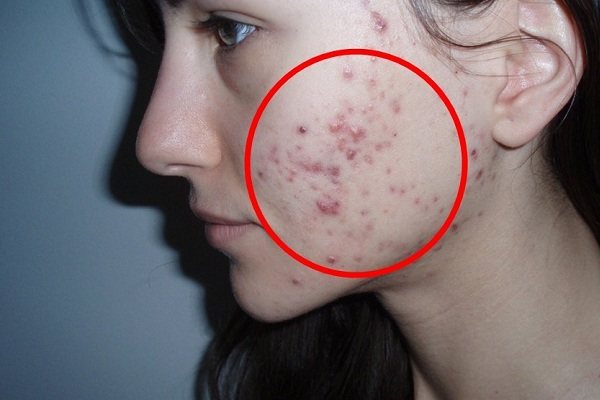
In dermatology, there is a classification of acne based on severity:
- Acne is localized in one area of the body, purulent pustules are rare;
- A large area of the face or body is affected, the ratio of comedones and ulcers is equal;
- The appearance of deep pimples filled with pus, which tend to scar;
- The formation of fistula entrances, the nodes acquire significant sizes.
As is the case with other forms of acne, the described variety occurs due to impaired functioning of the secretory glands. They produce excess sebum and cystic acne develops. The reasons for increased fat production lie in:
- Hormonal changes caused by adolescence, pregnancy, abortion, menopause and gynecological diseases in women;
- Thickening of the upper layer of the epithelium, preventing the normal outflow of “fat”;
- Weakened immune system;
- Dysfunction of the digestive system;
- Lack of hygiene, habit of touching your face with unwashed hands;
- Drug therapy, in particular supplements containing steroids;
- Exposure to stress and anxiety;
- The habit of squeezing out purulent pimples;
- Genetic predisposition to acne.
Fourth stage
At this stage, there are more than 50 comedones and 30 papules, pustules, more than five nodules, the skin is inflamed and reddened. Pustules may merge and form ulcers, which leads to severe pain and psychological discomfort. There is pain in the nodes located deep under the skin, leaving very noticeable scars. At this stage, the patient experiences serious depression, and the use of antidepressants and tranquilizers only aggravates the skin condition. A person needs consultation not only from a dermatologist, but also from a psychologist.

Treatment
When choosing a treatment method, it is important to take into account the prevalence of the process, the degree and duration of the disease. Most often, doctors treat pimples (acne) with lotions, gels, and creams that contain tretinoin. Such drugs help reduce sebum secretion.
Sometimes treatment with antibiotics is necessary to reduce inflammation and kill bacteria. In particularly severe cases, a drug containing isotretinoin is prescribed for oral administration. This treatment is contraindicated for women during pregnancy.
To avoid the appearance of scars, injections of various drugs are prescribed into the affected area, which promotes rapid healing and relief of inflammation.
To prevent any form of disease, preventive measures are needed. It is necessary to limit the consumption of carbohydrates, fatty and fried foods, spicy foods, and sweets. Foods high in fiber are beneficial. It is important to regularly carry out water procedures using soap or special products. After playing sports or physical activity, you should take a shower. It is useful to take vitamin complexes, especially those containing vitamins B, A and E.
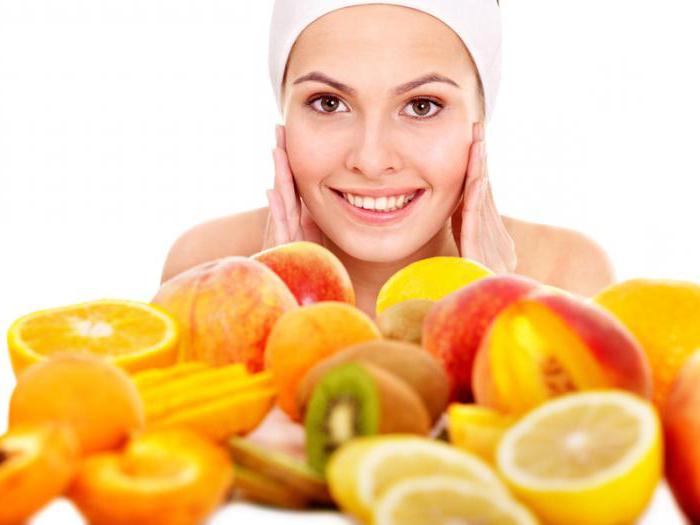
For the non-inflammatory form, special strips are used as treatment to mechanically remove the rash. To cleanse the skin and destroy bacteria, it is necessary to wipe the damaged areas with salicylic alcohol.
Pimples (acne) of an inflammatory nature are treated using a solarium. You can wipe problem areas with salicylic alcohol purchased at a pharmacy. More effective is the drug “Skinoren” based on azelaic acid or “Zinerit” with erythromycin and zinc, which destroy bacteria. You can use the product "Baziron", which suppresses the secretion of sebum. Accutane has the same properties.
If the measures taken do not have the desired effect, the use of antibiotics will be required. The most commonly prescribed drug is Clindamycin, which lasts ten days. Severe acne is treated with blood purification (plasmapheresis) or laser removal of acne.
Peeling is used to cleanse the skin. This procedure involves removing the surface layers of the skin with weak acid solutions (chemical peeling). Mechanical resurfacing (dermabrasion) can be used. You can get rid of acne with the help of a special pinch massage and superficial cryotherapy.
Hormonal treatment for acne is mainly prescribed to women. Most often, the use of combined estrogen and progestogen preparations is recommended. Spironolactone is prescribed for polycystic ovary syndrome.
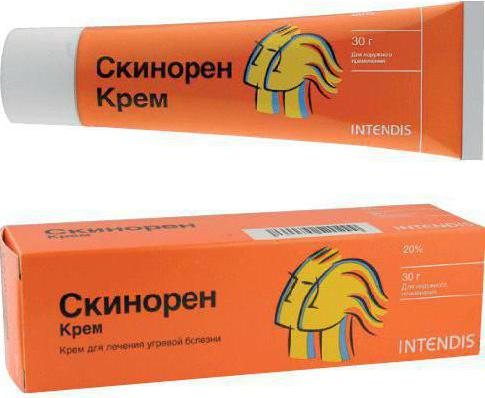
Drug treatment of acne
There are various drugs available on the market today to treat acne. Before purchasing a medicine, you should pay attention to the composition. The ideal option would be to choose a medicine based on natural ingredients without harmful chemicals.
Popular acne remedies:
- Facial gel "Duak" . The composition contains the antibiotic clindamycin, which quickly eliminates signs of the inflammatory process and destroys pathogenic bacteria not only on the surface of the skin, but also in the deeper layers of the epidermis. The gel should be used once a day for three months.
- "Clindatop" . The drug is intended for the treatment of skin with mild to moderate acne. The antibiotic also eliminates pathogenic flora on the face and eliminates foci of inflammation.
- "Isotrexin" . The acne ointment contains erythromycin and isotretinoin. The first component kills harmful bacteria, the second restores the skin structure and promotes rapid tissue regeneration.
- "Zinerit" . The product contains zinc and erythromycin. According to patient reviews, the skin in the acne area dries out and the acne gradually disappears. The medicine is designed for two months of use.

In some cases, the treatment regimen for acne in women includes taking hormonal contraceptives, which restore the level of female hormones in the blood and improve the condition of the skin.
Treatment at home
Home treatment will be effective if you follow some rules:
1. It is not advisable to wash your face more than twice a day. Frequent water procedures provoke inflammatory processes. It is necessary to replace soap with foam or gel for problem skin, use them in moderation.
2. During treatment, stick to your diet. The diet should be dominated by vegetables and fruits, fermented milk products. It is necessary to limit the consumption of meat and sweets. Bran is very useful because it helps eliminate toxins.
3. Take a vitamin complex with zinc.
4. Do not try to squeeze out a large pimple yourself; this may increase inflammation.
Basically, to get rid of acne, just use various over-the-counter anti-acne medications with benzoyl peroxide, azelaic acid, resorcinol, salicylic acid and sulfur.
Benzoyl peroxide helps kill acne-causing bacteria. Azelaic acid has antibacterial, anti-inflammatory and keratolytic effects. With the help of resorcinol, salicylic acid and sulfur, comedones are removed.
Apply such products daily to the affected areas after cleansing the skin. If drying out or irritation is observed, reduce the frequency of use of the drug (once every 2-3 days).
For effective treatment at home, you can use folk remedies for acne.
Antibiotics
Antibiotics for facial acne are prescribed in severe cases of the disease, when other medications do not give the desired result. Despite the high effectiveness of antibacterial drugs, such therapy can provoke a disruption of the intestinal microflora. Therefore, they must be taken with caution; an acne treatment regimen drawn up by a doctor is required.
These medications are available for local use (gels, ointments, creams) and internal effects on the source of infection.
Antibiotics for external use:
Erythromycin is an ointment characterized by a wide spectrum of action that affects the synthesis of proteins of pathogenic microorganisms, thereby preventing their reproduction.
- resolves pus inside pimples, reduces inflammation and redness, positive dynamics are observed on the fifth day;
- has a long-lasting effect; after completing the course, acne does not appear on the face for a long time;
- approved for use by people who have an allergic reaction to penicillin;
- Contraindications include age under ten years, liver and kidney pathologies.
READ ALSO: For those who have acne due to hormones, how do you cope?
Skinoren is available as a gel or cream that has an antibacterial, anti-inflammatory, softening effect.
- intended as a remedy for acne, increased pigmentation, seborrheic dermatitis, rosacea;
- the active substance (azelaic acid) enters the deep layers of the dermis, providing healing properties;
- if you follow a long course, the effectiveness of the gel and ointment will be at the same level, and the result will last a long time;
- Not recommended for people with hypersensitive skin prone to irritation.
Differin is a gel that ensures proper metabolism in the skin and protects the epidermis from external negative influences.
- copes with minor acne, can overcome severe acne only in combination with other drugs;
- affects the production of sebum, reduces oiliness. Thanks to this effect, the pores become free, the number of inflammations is reduced;
- during therapy with this drug, it is not advisable to stay in the open sun for a long time and use products containing drying components (zinc, alcohol, salicylic acid, etc.);
- prohibited if you are allergic to the components of the medicine; apply with caution for seborrhea and dermatitis.
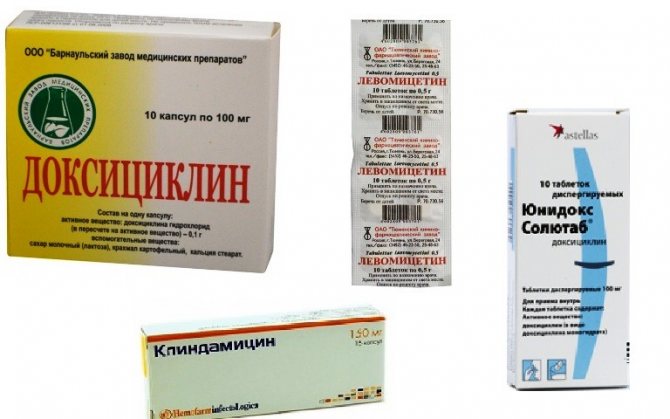
Antibiotics for internal use:
Josamycin is a drug that can prevent protein synthesis in bacterial organisms, thereby destroying their activity.
- fights almost all pathogens that cause acne;
- take two tablets a day for a month. To maintain the result, continue to take one tablet for another eight weeks;
- It is better not to combine this medicine simultaneously with contraceptives, as it may reduce the effect of the latter;
- approved for use in children over 14 years of age, not recommended if there are chronic liver problems and during breastfeeding.
Azithromycin is a medicine aimed at destroying a large number of harmful microorganisms that cause inflammation and acne.
- prescribed for many infectious diseases, capable of destroying most pathogens;
- an effective remedy for facial acne, erysipelas, dermatitis;
- A convenient course of treatment is three days. Take one tablet a day;
- It is prohibited for people suffering from serious kidney damage, children under twelve years of age and nursing women.
Doxycyline is an antibiotic that stops the spread of bacteria by disrupting their synthesis.
- eliminates rashes and inflammation in a short time, having a detrimental effect on anaerobic and aerobic microorganisms;
- is able to get rid of infections that have arisen in different parts of the body;
- treatment of acne on the face requires a twelve-week course;
- should not be used by people with anemia, fungal diseases, or circulatory problems.
Most often, treatment of facial acne with antibiotics is recommended for patients whose rashes are chronic. These drugs can eliminate the exacerbation, but without proper care and compliance with preventive measures, the effect will be temporary.
Mask with bran and baking soda
Rye bran (1 tbsp) is crushed with a coffee grinder or meat grinder, one or two teaspoons of soda are added, and mixed thoroughly. The required amount of the mixture is diluted with water. You should get a paste, which is applied to the face and kept for 7-10 minutes, after which it is washed off with cool water with a pinch of soda dissolved in it. The remaining product is stored in a glass container and used as needed.
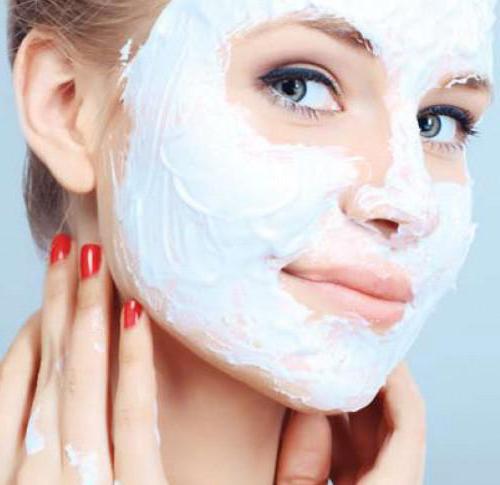
Folk recipes
Another option for dealing with acne is folk remedy therapy. Properly prepared products can be as effective as salon cosmetics. A wide variety of recipes allows you to choose the most optimal one.
Treating facial acne at home has a number of advantages:
- all components involved in the preparation are of natural origin, so the likelihood of allergic reactions or other unpleasant consequences from use is much less;
- independent selection of ingredients guarantees a high-quality product;
- no cosmetologist is required, all procedures are carried out independently without special equipment or devices;
- This method is considered budget-friendly; the necessary components are sold in a grocery store or pharmacy. Medicinal herbs can be found in your own summer cottage or forest.
Let's present a few simple recipes that you can prepare yourself at home:
- Green tea lotion – recommended for oily skin affected by inflammatory lesions. Relieves redness and soothes.
A strong tea brew is prepared from high quality leaves. Let stand until completely cooled, then add lemon juice (in equal proportions). The resulting mixture is used to treat the affected areas three times a day.
- Aloe compress is good at drawing out internal acne, relieving pain and discomfort.
A medium-sized leaf is cleared of thorns and cut into thin slices. They are placed on nascent or already formed ulcers and fixed with adhesive tape. Leave it overnight, and in the morning remove any remaining blackheads with a cotton pad.
- Wormwood infusion – treats inflammation, improves the structure of the skin.
Two tablespoons of the crushed plant are poured into glasses of boiling water. Leave to infuse for three hours in a dark place. Treat the skin with it as often as possible (three times a day or more).
- Calendula solution has a wound-healing effect, eliminates traces of rashes and age spots.
READ ALSO: Pimples on the butt in women - causes
You can buy calendula tincture (on flowers) at the pharmacy. A teaspoon is mixed with a glass of water and a spoon of honey. A napkin or cloth is soaked in this solution and applied to the face for half an hour. Afterwards wash with clean water.
- Protein mask - helps get rid of rashes in the T-zone, temples, blackheads on the nose and chin.
The white is separated from the yolk and transferred to a separate bowl. Add a teaspoon of lemon juice. Beat the mixture with a mixer until a rich foam forms. Apply successively to the facial skin in three layers, waiting until the mask dries. Then rinse everything off thoroughly and apply a nourishing cream.
Prevention
The main preventive measure for acne on the face is regular skin care. People who are prone to this disease should not use fatty creams, oils and ointments that contain lanolin and petroleum jelly. It is necessary to choose cosmetics that are labeled “non-comedogenic”; they do not contain components that contribute to the development of acne.
During treatment, it is necessary to exclude fatty, spicy, fried foods, sweet and flour products from the diet. It is recommended to limit the consumption of carbonated drinks, strong tea and coffee. Alcohol and smoking have a negative effect on the skin. The diet should be dominated by vegetables and fruits, freshly squeezed juices, and fermented milk products. Proper nutrition, walks in the fresh air, physical activity in combination with medication or folk treatment will help you forget about pimples (blackheads and acne).
Homeopathy treatment
Another common option for treating acne on the face is homeopathy therapy. It takes place in two stages. First, symptomatic signs are removed by taking low-concentrated medications. Then the specialist individually selects a medication that can activate the body’s defense systems and permanently overcome the troubling problem. These include:
Belladonna Plus is a medicine that affects the human central nervous system and also has a powerful anti-inflammatory effect.
- helps cope with red rashes on the cheekbones and cheeks, cure mild seborrhea;
- combined with other drugs, therefore often prescribed in combination;
- has no side effects, but during pregnancy and breastfeeding it is better to refrain from using it;
- The recommended dosage is one drop of extract per 30 milliliters of liquid.
READ ALSO: Why Women Squeeze Pimples
Pulsatilla is a homeopathic remedy based on the herb lumbago.
- gives an effect if the culprit of acne is the abuse of sweet and fatty foods;
- stimulates the functioning of your own immune system;
- in high concentrations causes allergies in the form of a rash or disruption of the digestive system;
- Suitable for light-eyed and fair-haired girls with pale skin.
Silicea is a solution of silicic acid. Release form: tincture or granules.
- copes well with inflammatory processes of various nature;
- not only fights acne, but also removes post-acne;
- for skin diseases, Silicea 30 is suitable;
- prohibited if you have chronic kidney disease.
Sulfur is a sulfur preparation.

- prescribed for extensive inflammation that is not amenable to other treatment methods;
- can be taken not only during an exacerbation, but also for prevention;
- high concentrations are dangerous, as they can cause allergies in the form of suppuration;
- Gepar Sulfur 6 is recommended for resolving purulent pimples.
Homeopathy can be an independent way to remove acne on the face, or be part of a comprehensive treatment. Many note the high effectiveness of this method, exceeding even the antibacterial effect.

